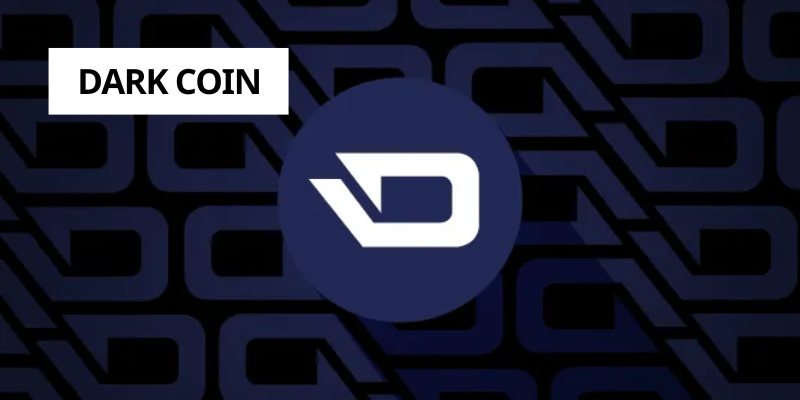The query “What is the Dark Coin?” opens a window into the world of privacy-focused cryptocurrencies, where anonymity and security are paramount. Dark Coin, initially launched as Darkcoin in 2014 and later rebranded as Dash, is a decentralized digital currency designed to offer enhanced privacy features compared to mainstream cryptocurrencies like Bitcoin.
Its innovative approach to transaction obfuscation and network security has made it a significant player in the crypto ecosystem. This article explores the technical foundations, applications, and broader implications of Dark Coin, providing a comprehensive answer to “What is the Dark Coin?”
Historical Context
To understand “What is the Dark Coin?”, we must trace its roots. Dark Coin emerged in response to the privacy shortcomings of Bitcoin, whose transparent blockchain allows transactions to be traced through advanced analytics. Created by Evan Duffield, Dark Coin introduced a novel feature called DarkSend, which anonymizes transactions by mixing them in a pool. This feature addressed the growing demand for financial privacy in an era of increasing digital surveillance.
The rebranding to Dash in 2015 aimed to shift focus from its dark web associations to its potential as a scalable, user-friendly digital cash system. Yet, the question “What is the Dark Coin?” remains relevant due to its enduring reputation as a privacy pioneer and its continued use in anonymity-driven contexts.
Technical Foundations
The core of “What is the Dark Coin?” lies in its technical architecture. Dark Coin’s DarkSend (now PrivateSend) mechanism is a cornerstone of its anonymity. Unlike Bitcoin’s transparent ledger, DarkSend pools multiple transactions, shuffling them through a process facilitated by master nodes. These nodes, which require a significant stake of Dash to operate, ensure that transaction inputs and outputs are dissociated, rendering traceability nearly impossible.

Dark Coin also employs the X11 hashing algorithm, a chained sequence of 11 cryptographic functions that enhances energy efficiency and security. This algorithm, combined with a proof-of-stake-like system for master nodes, fortifies the network against attacks. By exploring these features, the question “What is the Dark Coin?” reveals a cryptocurrency engineered for privacy and resilience.
Applications in the Real World
Answering “What is the Dark Coin?” requires examining its real-world applications. Dark Coin’s anonymity has made it a preferred currency in dark web marketplaces, where users seek to conceal their identities. However, its utility extends far beyond illicit activities. In regions with hyperinflation or restrictive financial systems, Dark Coin serves as a secure, private alternative for everyday transactions, remittances, and savings.
The rebranding to Dash has spurred adoption in mainstream commerce, with integrations into payment gateways and point-of-sale systems. Its InstantSend feature, which enables near-instantaneous transactions, further enhances its appeal for retail and peer-to-peer payments. Thus, “What is the Dark Coin?” encompasses both its niche as a privacy tool and its broader role as a versatile cryptocurrency.
Advantages and Limitations
The allure of Dark Coin, as uncovered by “What is the Dark Coin?”, stems from its unique advantages. Its privacy features protect users from surveillance, while its decentralized governance model ensures community-driven development. The combination of InstantSend and PrivateSend offers a balance of speed and anonymity unmatched by many competitors.
However, Dark Coin is not without limitations. Its early association with the dark web has attracted regulatory attention, raising concerns about its potential misuse in illegal activities. Furthermore, the rise of other privacy-focused cryptocurrencies, such as Monero, which uses advanced cryptographic techniques like ring signatures, challenges Dark Coin’s dominance in the privacy space. Addressing “What is the Dark Coin?” involves weighing these strengths against its vulnerabilities.

Regulatory Landscape
The question “What is the Dark Coin?” also prompts an exploration of its regulatory challenges. Privacy cryptocurrencies like Dark Coin operate in a gray area, as their anonymity features complicate compliance with global AML and KYC regulations. Some exchanges have delisted privacy coins to avoid regulatory backlash, limiting Dark Coin’s accessibility.
On the other hand, advocates argue that Dark Coin’s privacy features are essential for protecting individual rights in an era of mass surveillance. The tension between privacy and regulation shapes the discourse around “What is the Dark Coin?” and underscores the need for balanced policy solutions.
The Road Ahead
Looking forward, “What is the Dark Coin?” evolves into a question about its future trajectory. As Dash, Dark Coin is expanding its ecosystem through initiatives like Dash Platform, which aims to support decentralized applications and smart contracts. These developments position Dark Coin to compete with leading blockchain networks like Ethereum.
Nevertheless, its success will hinge on overcoming regulatory hurdles and maintaining technological relevance. By addressing “What is the Dark Coin?” from this perspective, we see a cryptocurrency poised to bridge the gap between privacy and mainstream adoption.
In summary, the question “What is the Dark Coin?” unveils a cryptocurrency that has redefined financial privacy through innovative technology and strategic evolution. From its DarkSend-powered anonymity to its aspirations as a global digital cash system, Dark Coin (Dash) offers a compelling blend of security, speed, and versatility. While challenges like regulatory scrutiny and competition persist, its contributions to the cryptocurrency landscape are undeniable. For those seeking to understand “What is the Dark Coin?”, the answer lies in its pioneering role in empowering users with financial autonomy in a digital age.

